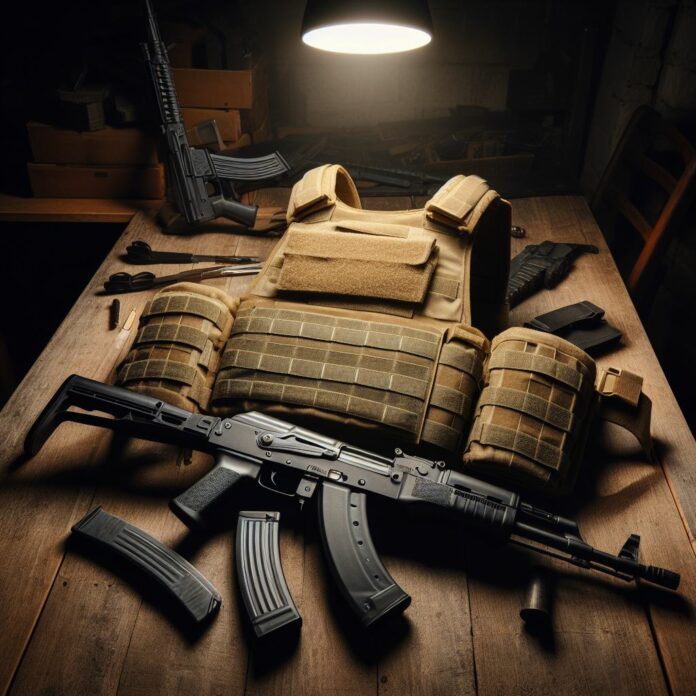Bulletproof vests are essential protective gear used by military personnel, law enforcement officers, and individuals who require extra safety in dangerous situations.
These vests are designed to stop or mitigate the impact of bullets and projectiles, providing a layer of protection for the wearer.
However, there is often confusion regarding the effectiveness of bulletproof vests against specific types of ammunition, such as AK-47 rounds.
The question,
“Can a bulletproof vest stop an AK-47 round?”
is crucial in assessing the level of protection these vests offer against one of the most widely used rifles in the world.
To understand whether a bulletproof vest can stop an AK-47 round, it is crucial to delve into the functioning of bulletproof vests and the characteristics of AK-47 rounds.
Bulletproof vests work by dispersing the energy of the bullet or projectile across a large area, preventing it from penetrating the body. They typically consist of layers of strong fibers, such as Kevlar or Dyneema, that absorb and distribute the impact force.
An AK-47 is a widely known assault rifle that fires intermediate rounds. These rounds are typically 7.62x39mm and are known for their high velocity and penetrating power. They can pose a significant threat, and it is important to assess whether bulletproof vests can effectively stop them.
The effectiveness of a bulletproof vest against AK-47 rounds depends on various factors, including the level of protection provided by the vest. Different vests are rated based on their ability to stop different calibers and velocities of bullets. While some vests are designed to stop handgun rounds, others are specifically designed to withstand rifle fire.
When it comes to AK-47 rounds, a regular soft body armor vest may not provide adequate protection. Higher levels of protection, such as vests incorporating hard armor plates, are often necessary to effectively stop AK-47 rounds. These plates are typically made from materials like steel, ceramic, or polyethylene, which offer greater resistance against powerful rifle rounds.
Other factors that can affect the ability of a bulletproof vest to stop AK-47 rounds include the quality and design of the vest itself, the distance from which the shot is fired, and the angle of impact. These factors can influence the vest’s ability to disperse and absorb the impact force, thus affecting its overall effectiveness.
How Does a Bulletproof Vest Work?
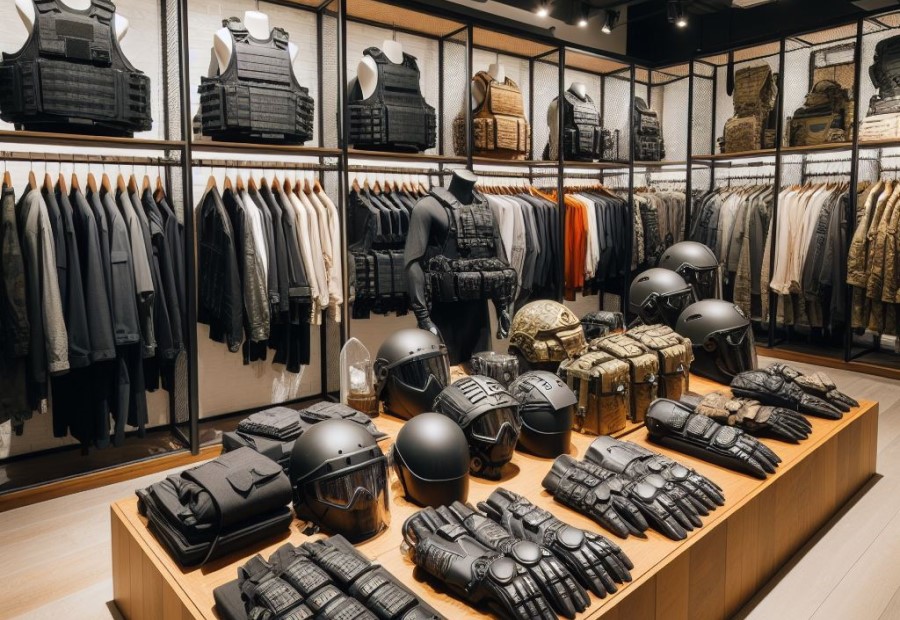
A bulletproof vest works by using layers of specialized materials to absorb and distribute the energy of a bullet upon impact, reducing its penetration. The vest typically consists of multiple layers of strong fibers, such as Kevlar or Dyneema, which are woven together to form a strong barrier. These fibers are highly resistant to tearing and can spread the force of a bullet across a larger area, which helps prevent it from piercing the vest.
In addition to the fibers, bulletproof vests often include ceramic or metal plates, which further enhance their protective capabilities. These plates are designed to shatter upon impact, absorbing even more energy and slowing down the bullet.
It’s important to note that while bulletproof vests can provide significant protection against certain types of bullets, they are not completely invincible. The level of protection provided depends on several factors, including the thickness and quality of the materials used, as well as the type and velocity of the bullet.
In 1969, a former pizza deliveryman named Richard Davis invented the first modern soft body armor, which eventually evolved into the bulletproof vests we know today. Davis’ creation, the Second Chance vest, used multiple layers of Kevlar and was able to stop bullets fired from handguns.
Since then, advancements in materials and designs have significantly improved the effectiveness and comfort of bulletproof vests, saving countless lives in dangerous situations.
Understanding AK-47 Rounds
To gain a complete understanding of AK-47 rounds, it is crucial to take into account their caliber, velocity, and penetrating power. AK-47 rounds typically have a diameter of 7.62mm and a length of 39mm, denoted as 7.62x39mm. These rounds can reach speeds of approximately 715 meters per second, granting them substantial kinetic energy.
Regarding penetration capabilities, AK-47 rounds are renowned for their effectiveness. They can penetrate an array of materials, including body armor, walls, and vehicles. Soft body armor and less dense substances pose no significant challenge for these rounds.
When comparing AK-47 rounds to other types of ammunition, it is important to note their larger diameter and higher velocity in relation to many handgun rounds. These characteristics result in greater stopping power and increased potential for damage upon impact.
Understanding the capabilities of AK-47 rounds is vital for assessing the effectiveness of various protective measures. It is crucial to consider the specific threat posed by AK-47 rounds and ensure the implementation of adequate protection to mitigate the risk of injury or harm.
What is an AK-47?
The AK-47, also known as Avtomat Kalashnikova model 1947, is a highly recognized and widely-known firearm that has gained global acclaim. Developed by Mikhail Kalashnikov and first introduced in 1947, this assault rifle is famous for its outstanding durability, reliability, and user-friendly design. It has become an iconic symbol of power and is often associated with military and paramilitary groups.
Chambered for the 7.62x39mm cartridge, the AK-47 utilizes an intermediate power round. With its distinctive curved magazine, it can contain up to 30 rounds, enabling sustained fire and swift reloading. Its unique design features a wooden stock and a prominent muzzle brake located at the end of the barrel.
Due to its effectiveness and dependability in combat, the AK-47 has played a significant role in numerous conflicts worldwide. This has led to its widespread adoption, making it one of the most commonly used rifles on a global scale. Furthermore, it has evolved into a profound symbol of resistance and rebellion.
If you’re interested in delving deeper into the AK-47 and its effectiveness against bulletproof vests, we encourage you to continue reading this article to obtain additional information.
What Type of Rounds Does an AK-47 Fire?
When assessing the effectiveness of a bulletproof vest, it is important to consider what type of rounds an AK-47 can fire. The AK-47, a widely known assault rifle, is capable of firing various rounds. These rounds can greatly impact their effectiveness and the level of protection required. Here is a list of the types of rounds that an AK-47 can fire:
- 7.62x39mm: This is the most common round used by the AK-47. It is a medium-caliber round known for its reliability and penetration capabilities.
- Armor-piercing rounds: In addition to standard rounds, the AK-47 can also fire armor-piercing rounds. These rounds are designed to penetrate armored targets and have enhanced penetration capabilities.
- Tracer rounds: Tracer rounds are rounds with a pyrotechnic charge that creates a visible trace of the projectile’s path. They can be used for signaling or target illumination.
- Incendiary rounds: AK-47s are also capable of firing incendiary rounds, which contain a flammable compound that ignites upon impact, creating a controlled fire.
The type of rounds that an AK-47 can fire can have varying levels of penetration and stopping power. This can influence the level of protection needed to stop them.
The Effectiveness of Bulletproof Vests Against AK-47 Rounds
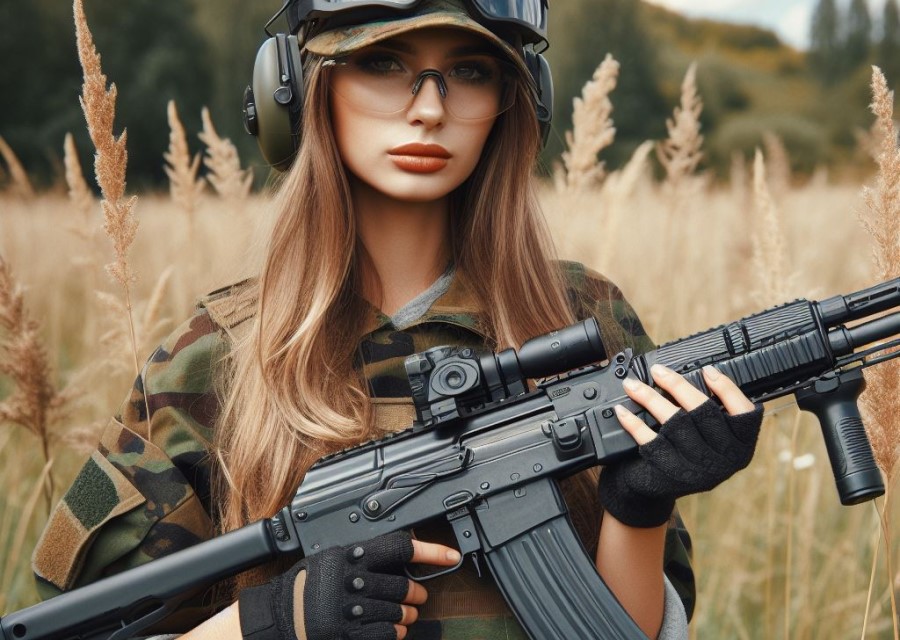
Bulletproof vests are specially designed to provide protection to individuals against bullets and other types of projectiles. However, when it comes to AK-47 rounds, the effectiveness of these vests can vary. It is important to note that no vest can guarantee 100% protection against AK-47 rounds. Nevertheless, bulletproof vests can significantly reduce the risk of injury or fatality.
The effectiveness of a bulletproof vest against AK-47 rounds depends on several factors, including the type and quality of the vest and the distance from which the round is fired. Vests made from strong materials, such as Kevlar, tend to offer better protection. Additionally, it is crucial to ensure that the vest covers vital areas such as the chest, back, and sides.
Although a bulletproof vest may not completely halt an AK-47 round, it can absorb and distribute the impact, thereby reducing the harm caused. The level of protection provided by a vest can be determined using the standards set by the National Institute of Justice (NIJ). These standards classify vests into different levels based on their ability to stop bullets of varying calibers.
Can a Bulletproof Vest Stop an AK-47 Round?
A bulletproof vest is specifically designed to provide protection for the wearer against certain types of bullets and projectiles. However, the question of whether a bulletproof vest can stop an AK-47 round does not have a straightforward answer.
Bulletproof vests undergo testing and rating procedures that assess their ability to halt different bullet types. Generally speaking, most bulletproof vests are not specifically designed to withstand AK-47 rounds, which are renowned for their immense penetrating power. These rounds possess high velocity and are capable of penetrating most standard body armors.
Nevertheless, there are specialized vests available, equipped with hard armor plates, that offer enhanced protection against high-velocity rifle rounds, including AK-47 rounds. These vests are created using robust materials like ceramic or polyethylene, which can either stop or deflect bullets.
It is essential to recognize that the effectiveness of a bulletproof vest against AK-47 rounds relies on various factors. These factors include the quality and design of the vest itself, the distance from which the shot is fired, and the angle of impact.
What Level of Protection is Needed to Stop an AK-47 Round?
To effectively prevent an AK-47 round, a bulletproof vest must provide a high level of protection. Given the potent force of AK-47 rounds, typically firing 7.62x39mm cartridges, the vest must offer ample ballistic resistance.
Specifically, a vest with a Level III or Level IV rating is indispensable in halting AK-47 rounds. These levels offer supreme protection against rifle rounds and are specifically engineered to endure multiple hits from AK-47 rounds.
Level III vests predominantly consist of robust materials, such as aramid fibers, while Level IV vests incorporate additional hard armor plates. These plates, composed of ceramics or other tenacious materials, effectively absorb and disperse the impact of an AK-47 round. The effectiveness of the vest also hinges on its design and quality.
It is imperative to acknowledge that the vest’s capability to repel AK-47 rounds may also rely on the distance from which the shot is discharged. At close range, the round exhibits heightened impact energy, necessitating even more robust protection.
Fact: AK-47 rounds can attain speeds of approximately 700 meters per second, making them immensely potent and arduous to impede without proper protection.
Factors Affecting the Ability of a Bulletproof Vest to Stop AK-47 Rounds
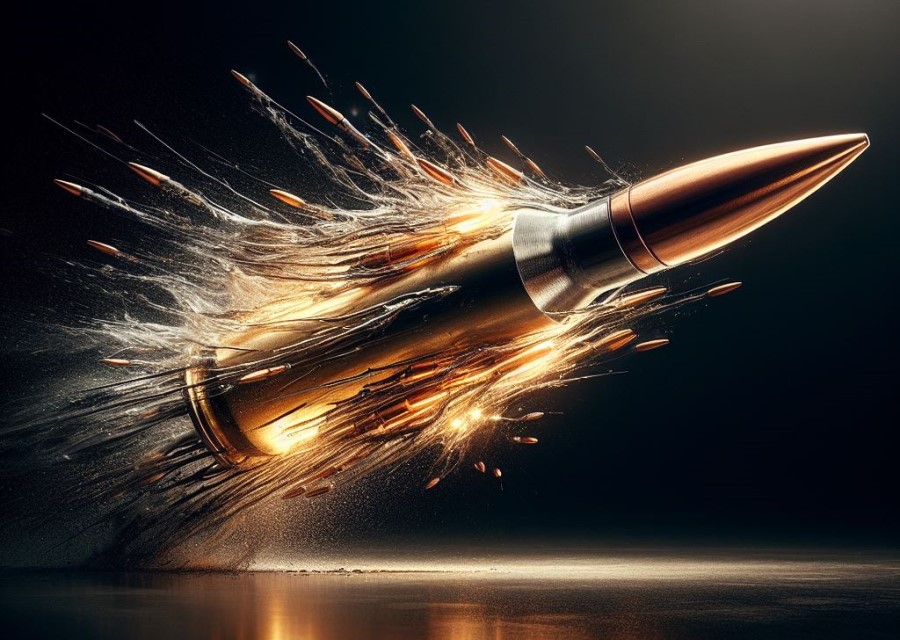
When it comes to stopping AK-47 rounds, several factors impact the effectiveness of a bulletproof vest.
In this section, we’ll dive into the crucial elements that determine whether a vest can provide adequate protection against these powerful bullets.
From the quality and design of the vest to the distance from which the shot is fired, we’ll explore how these variables play a vital role in safeguarding lives.
Get ready to uncover the intricacies behind bulletproof vests and their ability to withstand AK-47 rounds!
Quality and Design of the Vest
When it comes to the quality and design of a bulletproof vest, several factors contribute to its effectiveness in stopping AK-47 rounds:
- Material: The type of materials used in the construction of the vest plays a crucial role. High-performance fibers like Kevlar or Dyneema are commonly used due to their exceptional strength and ability to withstand high-velocity impacts.
- Layering: Bulletproof vests often consist of multiple layers of material to provide optimal protection. The arrangement and combination of these layers are designed to disperse and absorb the force of the impact, reducing the likelihood of penetration.
- Panel Coverage: The vest should provide sufficient coverage to protect vital organs and ensure maximum protection. Full torso coverage, including front, back, and side panels, is essential.
- Fit and Comfort: A well-designed vest should fit properly and allow for a full range of motion without restricting mobility. It should be adjustable to accommodate different body shapes and sizes.
- Additional Features: Some vests include additional features like trauma pads or plate carriers, which can enhance the level of protection and distribute the force of impact more effectively.
Fact: The National Institute of Justice (NIJ) sets the standards for bulletproof vests in the United States. These standards ensure that vests undergo rigorous testing to determine their level of protection against various types of ammunition, including AK-47 rounds.
Distance from Which the Shot is Fired
The effectiveness of a bulletproof vest can be influenced by the distance from which the shot is fired. When a bullet is fired from an AK-47 or any other firearm, it travels through the air before reaching its target.
The closer the shooter is to the target, the faster the bullet will be traveling and the more kinetic energy it will have upon impact.
To illustrate the impact of distance, consider the following table:
| Distance from Shooter | Bullet Speed | Kinetic Energy |
|---|---|---|
| 10 yards | 2,300 fps | 1,800 ft-lb |
| 50 yards | 2,000 fps | 1,500 ft-lb |
| 100 yards | 1,800 fps | 1,200 ft-lb |
As the distance from which the shot is fired increases, the bullet’s velocity and energy decrease. This decreasing energy can have an impact on the ability of a bulletproof vest to stop the bullet.
The vest’s material needs to be able to absorb and disperse the energy of the bullet to prevent penetration. At closer distances, where the bullet has higher energy, a high-quality bulletproof vest is more likely to stop the bullet effectively.
However, as the distance from which the shot is fired increases, the effectiveness of the vest may decrease, especially against higher velocity rounds like those fired from an AK-47.
Alternative Options for Protection Against AK-47 Rounds
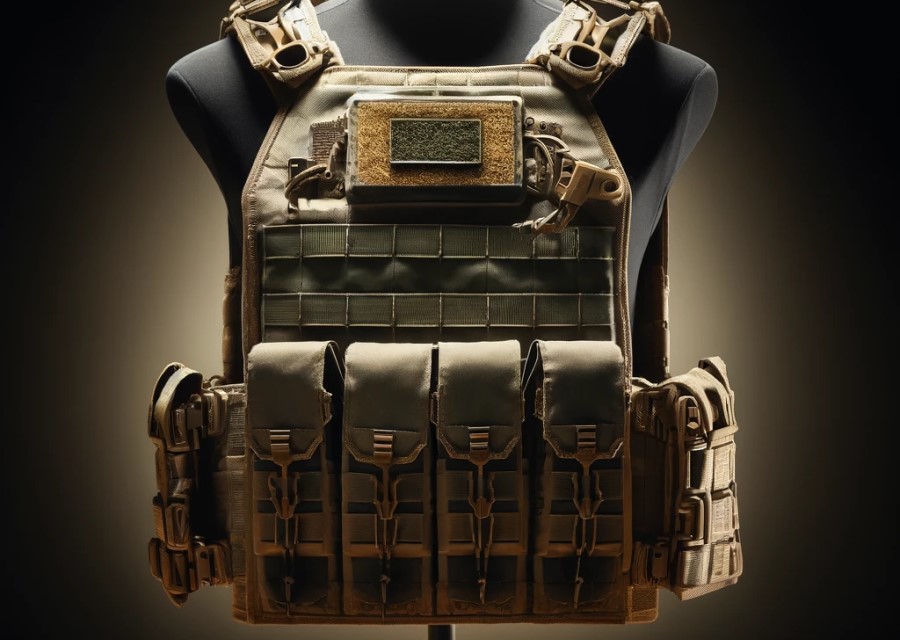
Looking for alternative options to protect yourself from AK-47 rounds? Dive into the world of defense solutions with a focus on hard armor plates and additional protective measures.
Discover how these ingenious alternatives can provide an extra layer of security against the formidable power of AK-47 rounds. Let’s explore the options that offer enhanced safety in the face of such a challenging threat. Get ready to equip yourself with the knowledge you need for optimal protection.
Hard Armor Plates
When it comes to protection against AK-47 rounds, hard armor plates are an effective option. These plates, made from materials like ceramic, steel, or polyethylene, are specially designed to withstand the impact of high-velocity rifle rounds.
- High durability: Renowned for their exceptional durability, hard armor plates can withstand multiple hits without compromising their bullet-stopping capabilities.
- Level of protection: Different hard armor plates provide varying levels of protection. The required level of protection depends on the specific AK-47 round being fired. Higher-level plates offer increased protection against more powerful rounds.
- Weight and mobility: Mobility can be affected by the weight of hard armor plates. It is important to consider the plate’s weight and its potential impact on your ability to move comfortably.
- Backface signature: The backface signature refers to the indentation or deformation that occurs on the non-impact side of the plate when struck by a bullet. Lower backface signatures indicate better energy absorption and a reduced risk of injury.
Fact: Some advanced hard armor plates can provide protection against multiple threats, including not only AK-47 rounds but also other high-velocity rifle rounds and certain armor-piercing ammunition.
Additional Protective Measures
When it comes to protection against AK-47 rounds, a bulletproof vest is an essential piece of equipment. However, there are also additional protective measures that can be taken to enhance safety:
- Ballistic Helmets: In addition to a bulletproof vest, wearing a ballistic helmet can provide additional protection for the head.
- Hard Armor Plates: Additional protective measures can be used in conjunction with a bulletproof vest to offer increased protection against high-powered rounds. These plates are usually made of strong materials such as ceramic or polyethylene.
- Layered Protection: Using multiple layers of clothing or protective materials can help to absorb the impact of rounds and reduce the risk of injury. This can include wearing additional body armor or using specially designed inserts or panels.
- Training and Tactics: Along with physical protection, it is important to have proper training and knowledge of tactical strategies to effectively respond to potential threats. This includes understanding cover and concealment, as well as knowing how to move and react in dangerous situations.
- Situational Awareness: Being aware of your surroundings and potential threats can help to avoid dangerous situations altogether. Stay alert and mindful of any suspicious activity or individuals.
By taking these additional protective measures in conjunction with wearing a bulletproof vest, individuals can greatly enhance their safety and increase their chances of surviving an encounter with AK-47 rounds.
Frequently Asked Questions
Can a bulletproof vest stop an AK-47 round?
The ability of a bulletproof vest to stop an AK-47 round depends on the type of vest and the specific round being used.
What type of body armor can stop the AK-47’s 7.62x39mm round?
Only Level III and Level IV plates made of rigid materials like steel or ceramic blended with aramid fibers can stop rifle rounds like the AK-47’s 7.62x39mm. Level IV plates can even stop larger caliber rounds.
What is the highest level of small arms protection offered by BulletSafe?
BulletSafe offers top-of-the-line Level IV plates for the highest levels of small arms protection.
Is there a bulletproof vest available that can stop a 7.62mm full metal jacket steel round from an AK-47?
Yes, there is one type of vest available that can stop a 7.62mm full metal jacket steel round from an AK-47. However, it is currently only available to the U.S. military.
Can a bulletproof vest protect against rifle calibers like the AR-15 and AK-47?
Atomic Defense offers a NIJ Level III+ Body Armor Plate that provides protection against rifle rounds, specifically AR-15 and AK-47.
What are the additional features of Atomic Defense’s NIJ Level III+ Body Armor Plate?
Atomic Defense’s NIJ Level III+ Body Armor Plate is made of ceramic and features additional PEAD™ support for added strength against various rifle calibers. It provides industry-leading protection and mobility, surpassing the NIJ’s standards by testing against multiple common calibers. It is also Level 3 Standalone, meaning it can stop various rounds without the need for additional armor behind it.

